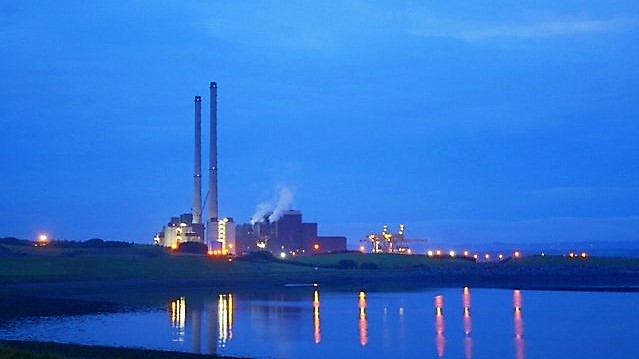October 24th, 2019
Ireland’s emissions are still going in the wrong direction,
the Director of the Environmental Protection Agency warned this morning,
leaving Ireland lagging behind in playing its part in global climate action.
Speaking this morning at a briefing on the latest EPA
emissions data, Laura Burke thanked the audience for coming out on a “grim” October
morning. The findings presented by Ms Burke were unfortunately equally as
gloomy.
The provisional EPA data show that we missed our binding annual emissions target from Europe by over five million tonnes last year. This is the third year in a row that we have missed our EU emissions budget.
Our overall emissions dropped by just 0.2 per cent in 2018
to 60.5 million tonnes, leaving us well off track to meet our 2020 and 2030 targets.
Ms Burke said, however, that we are also falling short in terms of achieving carbon neutrality by 2050, with rising emissions in agriculture and transport particularly worrying.
Ireland’s national policy position is to reduce CO2 emissions by 80 per cent on 1990 levels by mid-century across energy generation, the built environment, and the transport sector.
To reach this target, combined emissions from the three areas will need to fall to five million tonnes by 2050, meaning that emissions will need to decrease by just under one million tonnes every year starting now.
Stark reality of agri-emissions
Agriculture emissions – our largest emitting sector – went up 1.9 per cent (0.38 Mt CO2eq) in 2018, driven by the continued increase in dairy cow numbers – up 27 per cent in the last five years alone.
Ms Burke outlined the “very stark” finding that agricultural emissions went above 1990 levels for the first time in 18 years as dairy cow numbers, milk production and fertiliser use all went up.
Despite greater efficiencies in the sector, Ms Burke said that we won’t solve the problem of rising emissions until we uncouple the link to economic activity.
The increase in transport emissions is the clearest sign of emissions that are coupled to economic growth, up for the fifth time in six years. Transport emissions are now 137 per cent above 1990 level.
The one positive story from the latest data release is a significant 11.7 per cent drop in emissions from the energy sector. This is caveated, however, by the fact that this decline was largely due to technical issues at Moneypoint.

Coal decline
Problems with turbines and higher carbon pricing left the coal-fired
power station offline for large chunks of 2018, leading to a 44 per cent drop
in coal-fired electricity generation.
Ms Burke said that the impact on emissions was stark, leading to a reduction of 2.5 million tonnes of CO2 (almost 4 per cent of our overall national emissions).
“That really in a way has saved us in showing a marginal decrease [in emissions]. Otherwise, the figures would be higher,” she warned.
In one positive trend, electricity generated from wind increased by 14 per cent, putting the average annual share of electricity coming from renewables at 32.6 per cent.
This, combined with the reduced use of coal at Moneypoint, resulted in a significant reduction in the emissions intensity of electricity generation, now at its lowest level since 1990.
Ms Burke said that the Government’s new climate action plan offers ”real hope” to translate rhetoric into on the ground action.
“Scientists have been bringing data forward for years and this idea of climate disruption is not sudden, we have been talking about this for a long time and we need to translate talk into action,” she said.
The State’s new climate plan contains hundreds of actions across every sector of society, including ramping up renewables, increasing electric transportation and rolling out a nationwide retrofitting program.
Critics argue, however, that the annual emissions reductions projected to be achieved by the plan will not get us to carbon neutrality by 2050.
Oisín Coghlan of Friends of the Earth questioned the plan’s ambition of a “wholly inadequate” two per cent decline in emissions year-on-year from now to 2030.
“If the Government is remotely serious about its own target of reaching carbon neutrality by 2050 then we need to be reducing our emissions by at least five per cent to seven per cent a year from now to 2050.”
The EPA has yet to fully assess the potential emissions reductions that could be achieved by the plan but will include estimates in its next projections.
The post Ireland still lagging behind in climate action policy appeared first on Green News Ireland.










